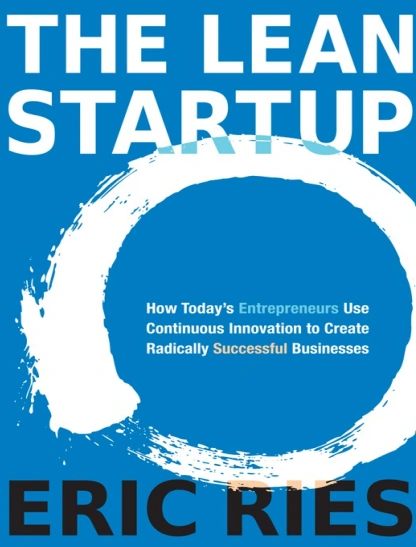
In The Lean Startup , Eric Ries redefines entrepreneurship with a model built on agility, experimentation, and customer feedback. By using the Build-Measure-Learn cycle, startups can innovate faster, reduce waste, and build products people truly want. A must-read for founders, innovators, and anyone building the future.
The Lean Startup by Eric Ries is a revolutionary guide for entrepreneurs that challenges traditional business-building models and introduces a new methodology based on agility, experimentation, and customer feedback .
Ries, a former startup founder and advisor, draws from his own experiences in Silicon Valley and blends them with insights from lean manufacturing, scientific thinking, and modern software development. His goal? To help startups avoid wasting time, money, and resources building products no one wants .
At its core, The Lean Startup teaches entrepreneurs how to build businesses that are not only innovative but also sustainable and scalable—by continuously learning from real-world data and adapting quickly.
The central idea of the book is the Build-Measure-Learn feedback loop , which replaces the traditional “build-it-and-they-will-come” approach with an iterative process that prioritizes validated learning over assumptions.
This cycle repeats constantly, allowing startups to refine their offerings based on real market responses rather than guesswork.
An MVP is not a half-baked product—it’s a strategic tool to test your most important assumptions as cheaply and quickly as possible. Examples include landing pages, prototypes, or concierge-style services.
Rather than relying on opinions or predictions, startups should base decisions on empirical evidence gathered from actual customers. This type of learning helps avoid costly mistakes.
Traditional accounting doesn’t work well for startups because they’re focused on discovery, not execution. Ries introduces a new form of accounting that tracks progress through actionable metrics like customer retention, activation rate, and referral rates—not vanity metrics like downloads or page views.
When experiments fail to validate key assumptions, startups must make a crucial decision:
Pivoting is not failure—it’s a necessary part of the innovation process.
A problem-solving method borrowed from Toyota, this technique involves asking “Why?” five times to uncover the root cause of any issue. It encourages startups to fix underlying problems rather than just symptoms.
Instead of spending months developing a perfect product in isolation, startups should work in small batches—building small parts of the product, testing them, and iterating. This reduces waste and speeds up learning.
While the book focuses on startups, many of its principles apply to established companies, internal innovation teams, and even non-profits . Ries argues that all organizations can benefit from adopting a more experimental, customer-focused mindset .
He warns against the dangers of “theater” innovation —where companies create the appearance of progress without delivering real value. Instead, he promotes real, measurable progress through continuous improvement.
One often-overlooked aspect of The Lean Startup is its emphasis on organizational culture and team dynamics .
Ries highlights the importance of:
He believes that great teams are built around autonomy, mastery, and purpose—not control and micromanagement.
Throughout the book, Ries shares stories from successful startups like:
These examples illustrate how real companies applied lean principles to grow efficiently and avoid common pitfalls.
The Lean Startup is essential reading for:
Whether you’re launching a tech app, a service-based business, or a social enterprise, this book offers a practical, battle-tested framework for success.
The Lean Startup changed the way the world thinks about entrepreneurship. It replaced outdated, rigid business models with a flexible, data-driven approach that emphasizes learning, adaptation, and speed .
As Eric Ries writes:
“The only thing worse than starting a company on a false assumption is building a huge company on one.”
By embracing uncertainty and treating each startup as a series of experiments, entrepreneurs can dramatically increase their chances of building something truly valuable.